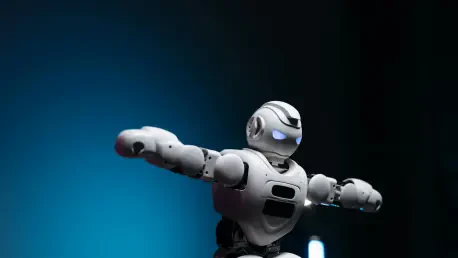In the fast-evolving world of robotics, Oscar Vail stands out as a trailblazer, forever intrigued by the transformative potential of technologies such as quantum computing and open-source projects. Recently, China captured global attention by hosting the world’s first humanoid robot fighting tournament—a spectacle reminiscent of a futuristic anime brought to life. Let’s dive into the insights of Oscar as we explore the intricacies of this groundbreaking event.
Can you tell us about the significance of China hosting the world’s first humanoid robot fighting tournament?
The tournament marks a significant milestone in robotics by bringing humanoid robots into the spotlight. It showcases how far we’ve come in developing these machines, transcending traditional robotic functions to embrace entertainment and competitive sports. The event underlines China’s commitment to leading in technological innovation, pushing the boundaries of what robots can achieve.
What was the atmosphere like at the event in Hangzhou?
The event in Hangzhou was electric, a mix of excitement and anticipation. You could feel the tension and thrill in the air as each match unfolded. With thousands tuning in via livestream, it was clear that this was not just an assembly of engineers and tech enthusiasts but a global event captivating a wide audience.
How did the tournament compare to scenes from movies like Hugh Jackman’s “Real Steel”?
While the movie “Real Steel” presents a dramatized version of robot boxing, the tournament in Hangzhou brought a real-world manifestation of the concept. The robots fighting in the ring had a certain grace and complexity that mirrored the fluidity you see on screen, although we’re not quite at the Hollywood-level spectacle yet.
How were the robots controlled during the matches?
The matches were a true synergistic effort between humans and machines. Operators worked with the robots, guiding them with precise instructions to execute fighting maneuvers. It wasn’t merely about tactical control but establishing a seamless interaction where the robots acted with remarkable agility and response to commands.
What kind of technology powers these humanoid robots? Can you elaborate on the AI and precision motion control systems used?
These humanoid robots are powered by advanced AI algorithms that enable them to make decisions in real-time. Precision motion control systems allow them to perform complex maneuvers swiftly and accurately. The integration of sensors and fine-tuned motor skills gives these robots their lightning-fast reflexes, bridging the gap between thought and action.
Who are the key players in these robot fights, and what are some of the standout robots featured?
Unitree Robotics emerged as a frontrunner with their flagship humanoid, the Unitree G1. Key players include teams from various tech companies and research institutions. Each robot has its unique set of skills, but the Unitree G1 stood out with its impressive agility and precision.
Can you describe the Unitree G1 and its capabilities?
The Unitree G1 is an agile humanoid, over four feet tall and approximately 77 pounds. It possesses the ability to execute kung fu like moves with precision and balance, showcasing its strength during its fight debut. Its engineering allows it to deliver powerful punches and maintain poise, making it a formidable contender in the ring.
How did the fight debut for Unitree G1 match up to expectations?
The Unitree G1 met and even exceeded expectations. Its performance was a testament to the advanced engineering and AI capabilities behind its creation. Executing complex actions in the heat of the battle, it demonstrated not only power but technical intricacy, delighting both developers and the audience.
How do the organizers see the balance between human and robot participation in these matches?
The organizers envision a balanced harmony where humans and robots complement each other’s strengths. They stress the importance of human ingenuity in orchestrating battles while allowing robots to demonstrate their autonomous capabilities. It’s about leveraging the best of both worlds to create an engaging spectacle.
What challenges do robots face in the ring, beyond just throwing punches?
Robots in the ring face several challenges including maintaining stability, reacting to fast-paced stimuli, and executing coordinated movements. The mechanical stress of impacts and the need for rapid decision-making test their endurance and AI systems under competitive pressure.
What were the main objectives for organizing such an event?
The event was not just about entertainment. It aimed at advancing structural design, boosting AI decision-making, and testing mechanical dexterity under pressure. The tournament provided a real-world laboratory for pushing the capabilities of humanoid robots further, fostering innovation.
How does this event contribute to advancements in structural design, AI decision-making, and mechanical dexterity?
By showcasing robots in a dynamic and challenging environment, the tournament reveals critical insights into their performance. This exposure promotes further research into materials, control systems, and AI algorithms, driving continuous improvements in their design and functionality.
What can viewers and participants expect from the upcoming humanoid robot tournament in Shenzhen?
The Shenzhen tournament promises to build on Hangzhou’s success, featuring an expanded roster of robots with even more sophisticated technologies. Participants can expect more competitive matches with improvements in robot capabilities and interactions, elevating the excitement and innovation on display.
How is China’s “robot renaissance” expected to evolve over the next decade?
China’s robot renaissance is likely to experience exponential growth over the next decade. With increased investments in AI, robotics innovations will drive new applications in various fields, from service industries to manufacturing, cementing the country’s position as a global leader in robotics.
What other roles do humanoid robots play in China aside from fighting?
Aside from fighting, humanoid robots are diversely utilized across sectors in China. They are involved in sales, car manufacturing, as customer service agents, and more. Their evolving roles demonstrate their adaptability and the vast potential to streamline various operations.
How does the projected market growth for humanoid robots reflect on China’s future in robotics?
The projected growth underscores China’s ambition to be at the forefront of the robotics industry. As the market grows, it will likely catalyze advancements in robot design and application, reinforce technological leadership, and transform numerous industries through automation and AI-driven solutions.









